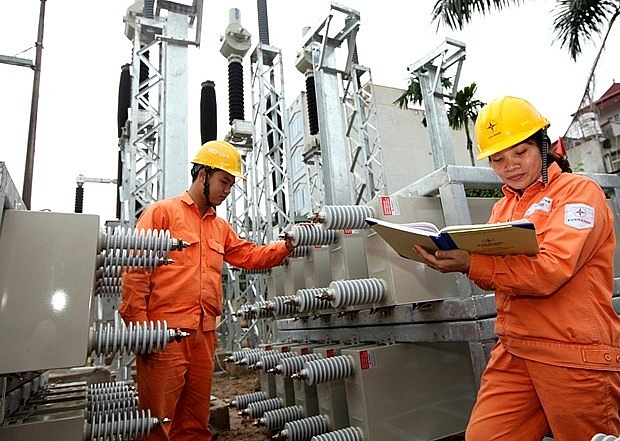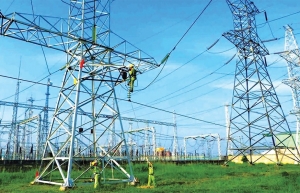Detailed implementation will direct success of PDP8
The latest draft plan for implementation of Power Development Plan VIII (PDP8), submitted by the Ministry of Industry and Trade (MoIT) on August 31, pointed out the vast challenges remaining despite the approval of the plan in May.
 |
| Detailed implementation will direct success of PDP8, Source: Vietnam+ |
“For solar power projects that have been approved and assigned to an investor, the specific progress will be considered in the implementation plan PDP8. However, this request cannot yet be carried out according to the MoIT’s Institute of Energy,” noted the latest draft plan.
The Institute of Energy, the unit responsible for developing plans to implement PDP8, explained that there are currently 23 solar power projects approved and assigned to investors with a total capacity of about 2,360MW. This is a much higher capacity than the 1,500MW limit currently set in the PDP8.
Meanwhile, the MoIT reported that there are more than 2,000 proposed wind, solar, and small hydropower projects. Among them, there are many whose connection plan to the power grid is unknown.
“The registration demand of localities for renewable electricity is also considerable compared to the amount of optimal calculated capacity in the PDP8, while the ranking of these projects in terms of legal status, land use, electricity prices, and socioeconomic efficiency are not yet available,” noted the latest draft.
The MoIT has now proposed that the selection of solar, wind, and small hydropower projects will be the responsibility of the locality, which is a new direction compared to a draft submitted in July.
“However, the fact that the locality has the right to choose an investor to develop projects will not guarantee that those investors will sign a power purchase contract to mobilise capital and actually build on the ground in time or not,” said an expert in negotiating such contracts.
Thanh Pham, country manager at Wartsila Corporation said, “It is very critical to have a detailed implementation plan with clear information on project capacity, location, and timeline together with required market mechanisms. Without these, projects planned in PDP8 cannot move ahead and the power system will face a lack of capacity, leading to potential power shortages.”
The MoIT admitted that the legal corridor for offshore wind power development is still unclear due to the lack of a national marine spatial plan, with no basis to determine the scope of marine management; thus, offshore wind power projects will be distributed regionally. Localities will decide on specific sizes and locations based on factors such as electricity production costs, capacity to release grid capacity, and transmission costs.
The PDP8 does not regulate the capacity of specific solar and wind power plant projects but only regulates the total capacity for each region. It sets out the country’s electricity roadmap for the period through to 2030, with a vision towards 2045. Under that, by 2030, renewable energy capacity is expected to reach 40GW or 40 per cent of the national power capacity.
There will be no limit on the capacity of behind-the-grid solar power projects, and no new coal-fired projects will be approved.
 | From aspiration to reality for PDP8 Weeks after the Vietnamese prime minister approved the national power development plan for 2021-2030 (PDP8), Hanoi and other major northern cities of Vietnam experienced serious electricity supply crunch. The PDP8, which will shape the country’s power development in the next decade, would be a good start to find a solution. Ngoc Nguyen, counsel at Hogan Lovells International LLP, explores the aspirational development goals set by the government and how to resolve the situation. |
 | Effective mechanisms will ensure an efficient PDP8 Vietnam’s National Power Development Plan VIII (PDP8) creates an important basis for developing the framework for investment and introducing new and significant enhancements to regulations for the energy industry in Vietnam over the next decade, toward a greener path. |
 | Vietnam embarks on green energy revolution with PDP8 blueprint Aiming to double its electricity capacity by 2030 and committed to achieving net-zero emissions by 2050, Vietnam is actively seeking a mix of domestic and international investments. Kang Seungho, special counsel at Dentons LuatViet, notes that as Vietnam embarks on this energy transformation, it faces both opportunities and challenges in embarking on a sustainable future. |
 | EVN proposes accelerated electricity imports from Laos Amidst a looming power deficit, Vietnam Electricity (EVN) is fostering strategic partnerships with Laotian electricity suppliers to ensure the country's energy security. By leveraging competitive pricing structures, EVN proposes accelerating the imports from Laos. |
What the stars mean:
★ Poor ★ ★ Promising ★★★ Good ★★★★ Very good ★★★★★ Exceptional
Related Contents
Latest News
More News
- CME Solar strengthens position in Vietnamese renewables (December 30, 2025 | 11:21)
- Self-care signals shift towards sustainable healthcare (December 30, 2025 | 10:12)
- GreenYellow marks five years of clean energy growth in Vietnam (December 26, 2025 | 15:51)
- TCP Group partner with VNUS to launch water conservation project (December 25, 2025 | 14:00)
- Heavy industries set for pilot greenhouse gas quotas (December 25, 2025 | 10:00)
- Swedfund invests in MSME growth and climate action in Vietnam (December 19, 2025 | 11:42)
- GreenYellow brings solar energy to light up remote schools in Tuyen Quang province (December 19, 2025 | 08:00)
- Charge+, Grab partner to develop EV charging network in Vietnam (December 18, 2025 | 17:11)
- Linking sci-tech and innovation to Vietnam’s net-zero future (December 18, 2025 | 14:31)
- Driving double-digit growth through green and circular transformation in Vietnam (December 17, 2025 | 09:00)

 Tag:
Tag:




















 Mobile Version
Mobile Version